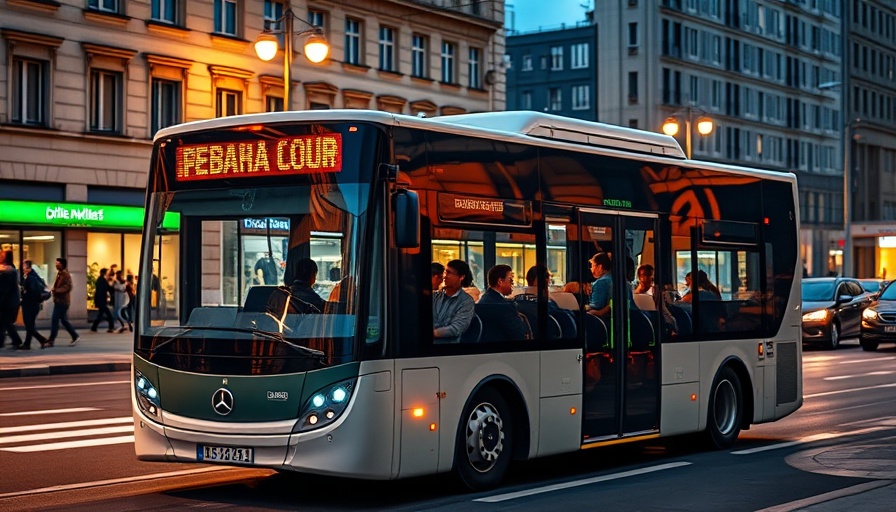
Europe's Progress in Clean Transportation
In a significant step towards sustainable urban transport, nearly half (49%) of new city buses across the European Union in 2024 were zero-emission models, marking a momentous shift in public transportation. This rapid transition, highlighted by the European Federation for Transport and Environment (T&E), is not just a statistic; it represents cleaner air and quieter streets for millions. As we delve deeper, we explore what this means for cities and the environment.
The Rise of Zero-Emission Buses
This year, battery-electric buses accounted for 46% of all new public transit vehicles, while fuel-cell buses made up the remaining share. These figures indicate a remarkable surge from the 36% of new electric city buses reported in 2023. Encouraged by new regulations enacted in 2024, cities are setting ambitious fleet targets and policy frameworks that favor zero-emission technology.
Impact of Local Policies
Recent analyses suggest that local regulations—including the establishment of zero-emission zones—are pivotal in driving this change. As municipalities adopt more aggressive measures, such as fleet conversions and emissions targets, they pave the way for the broader EU initiative aimed at achieving 100% zero-emission bus sales by 2027.
A Focus on Leading Countries
Some nations are outperforming others in this clean transport revolution. For instance, the Netherlands, Finland, and Iceland reached a striking 100% battery-electric bus sales, proving that commitment at the national level leads to substantive change. Meanwhile, Spain and the UK follow closely, achieving 57% and 56% in their zero-emission bus sales, respectively.
The Case of Estonia: A Remarkable Turnaround
Perhaps the most illuminating story of 2024 is that of Estonia, which recorded only 0% zero-emission buses in 2023. Fast forward to 2024, and it boasts an impressive 84% in new city bus sales as battery-electric models. This turnaround serves as an inspiring example for other slower-adopting countries, such as Slovakia and Hungary, showcasing what can be achieved with targeted efforts.
Looking Ahead: Future Predictions and Trends
With these promising trends, it is crucial to understand that the growth trajectory of zero-emission buses is likely to continue well beyond the current regulatory timelines. T&E anticipates that many cities will surpass the EU's Clean Vehicles Directive, which mandates around 32% zero-emission purchases for heavy-duty vehicles by 2030.
What This Means for Urban Communities
The implications of this transition extend beyond environmental benefits; they encompass public health improvements and enhanced quality of life for urban residents. Cleaner air translates to better respiratory health, reducing healthcare costs associated with air pollution. The anticipated move to full zero emissions promises a greener future, supporting not only European climate goals but also fostering local economies around sustainable practices.
Getting Involved in the Future of Urban Transport
As urban residents begin to experience the advantages of cleaner transportation, community involvement becomes vital. Local advocacy for more stringent sustainability measures, awareness campaigns about the advantages of electric public transport, and participation in city planning discussions can enhance these efforts. Every voice matters in creating a future where public transport is not just efficient but also environmentally friendly.
The substantial strides made in the shift towards zero-emission buses in Europe herald a transformative period for public transportation, with the potential to serve as a model for cities worldwide. As we continue encouraged by these developments, let's remain engaged and support initiatives that prioritize our planet's health.
 Add Row
Add Row  Add
Add 



 Add Row
Add Row  Add
Add 

Write A Comment